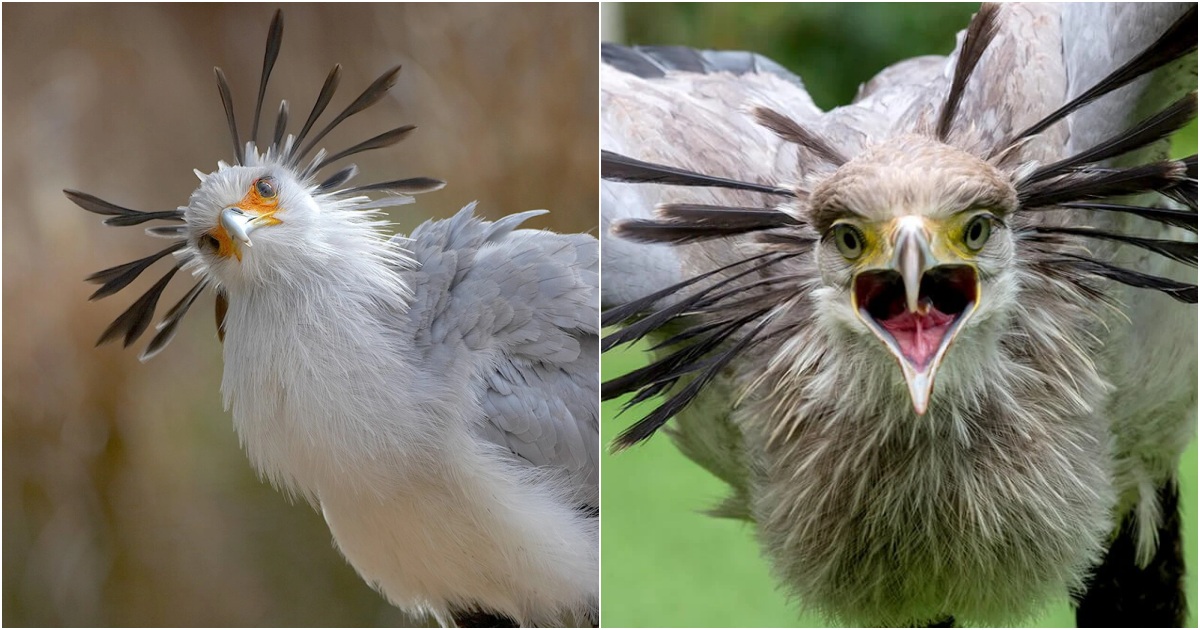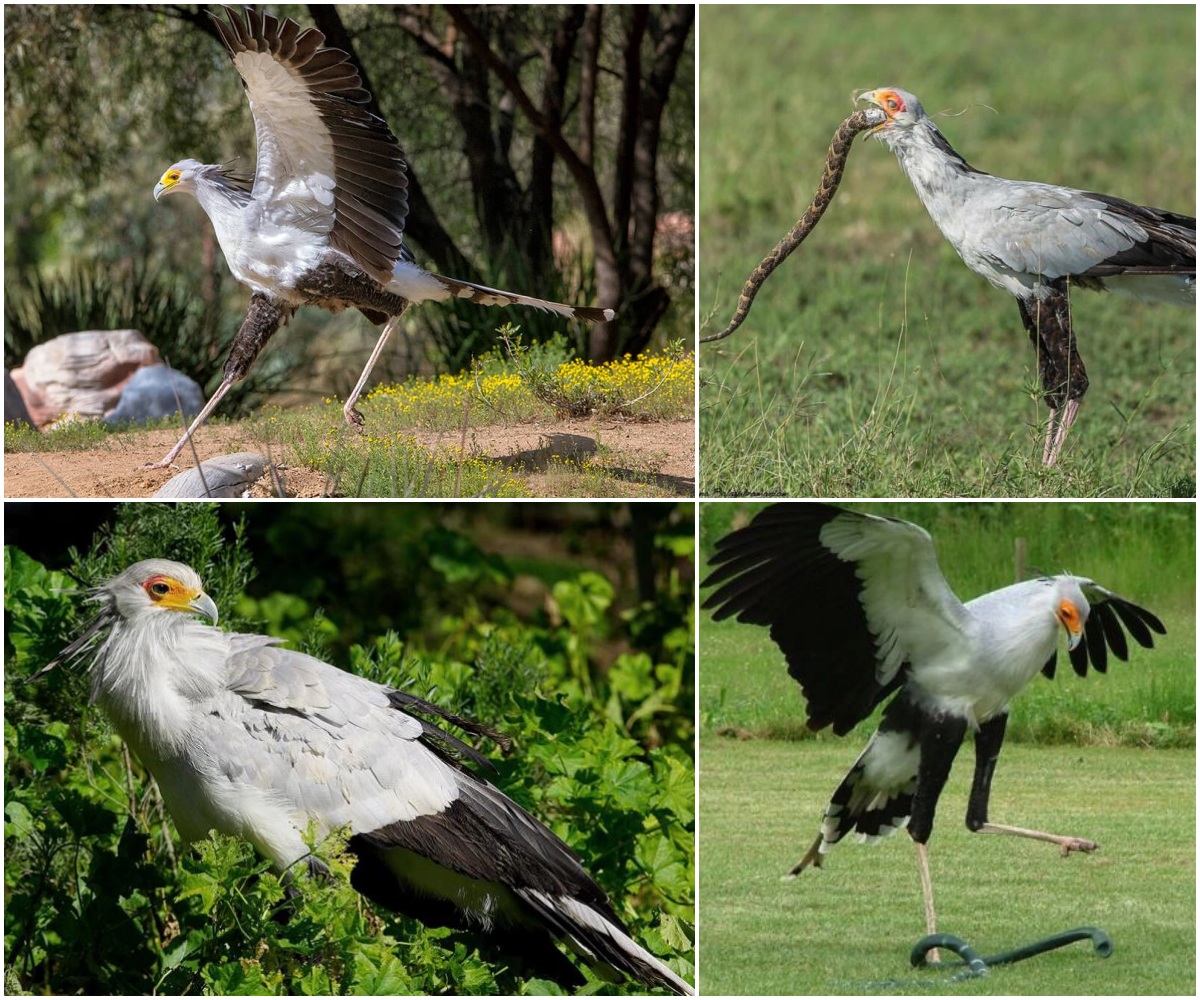Graceful Enigma: The Alluring Secretarybird – A Predator’s Beauty and Elegance

The ‘Secretarybird’ is a stunning and elegant bird that possesses long and graceful legs and stylish curved eyelashes, making it the envy of many women. However, beneath its alluring appearance lies a notorious assassin, unrivaled by any terrestrial foes.
When it comes to the beauty of birds, people often think of the resplendent peacock due to its colorful plumage. But in the vast and diverse realm of nature, there are other bird species that exude incredible charm and breathtaking beauty, leaving humans envious. One such bird is the Secretarybird – a golden beauty renowned for its long legs and gracefully curved eyelashes.

The name “Secretarybird” perfectly suits this extraordinary avian creature, given its striking physical attributes. This bird, scientifically known as Sagittarius serpentarius, belongs to the Sagittariidae family. Besides its scientific and lengthy names, it is commonly referred to as the Secretarybird. The name derives from its appearance, with the tufts of feathers on its head resembling quill pens or the headdress of 18th-century European secretaries. In addition to its unique name, the Secretarybird boasts incredibly long legs and luxurious curved eyelashes that evoke envy among women. This characteristic serves as evidence that the name “Secretarybird” is even more fitting and memorable than any other name.
This bird species is endemic to Africa and is often found in sparse grasslands and savannahs in the region south of the Sahara Desert. It can be easily recognized due to its large body, resembling that of eagles or vultures. An average Secretarybird stands about 1.3 meters tall, weighs around 3.3 kilograms, and measures between 112 and 150 centimeters in length, with a wingspan ranging from 191 to 225 centimeters. Due to its distinctive features, it is larger than any other diurnal bird of prey.
Despite its graceful and somewhat “feminine” appearance, the Secretarybird is a renowned predator in the wild. It hunts by walking and foraging on the grasslands and can even sprint when necessary. Its primary diet consists of small mammals, reptiles, other bird species, and insects. True to its name as the “bird that eats snakes,” it is adept at handling snakes, including venomous ones, without any challenge.
When encountering prey, the Secretarybird chases it using its beak and legs as weapons until it is caught and killed. Additionally, the bird displays its wings and raises the tuft of feathers behind its head to intimidate its prey. Some research suggests that this bird of prey has employed similar hunting strategies for the past five million years, even during the time of the dinosaurs.
With its extraordinarily long legs, the Secretarybird possesses one of the strongest kicks among all animal species worldwide. Its kick delivers a force of approximately 195 Newtons, which is about 5 to 6 times its own body weight. Its strike happens so swiftly that the entire action occurs within a fraction of a blink of an eye. Not only beautiful, robust, and formidable, the Secretarybird is also intelligent. When hunting, it takes advantage of nearby fires by collecting debris from the surroundings and igniting them, creating a situation where small prey cannot escape the flames.
The Secretarybird can form pairs at any time of the year, depending on the availability of food. Courtship among these birds is simple but captivating. The male and female birds extend their wings and engage in a playful pursuit across the grasslands. Together, they construct their happy nest, using branches, animal fur, leaves, and grass, which can reach a height of about 2.4 meters and can be used for several years. The parents diligently care for their offspring, unlike many other predatory bird species. The Secretarybird fathers and
mothers are excellent caretakers, teaching their young ones hunting skills, flying, and the effective use of their legs. It takes about 12 weeks for the young birds to grow sufficient feathers and wings, becoming self-assured individuals capable of survival without relying on their parents.
Due to its uniqueness, the Secretarybird has been honored by appearing on the logos and national flags of Sudan, symbolizing victory, and on the military insignia of South Africa, representing protection. Since 1968, the bird has been protected by the African Convention on the Conservation of Nature and Natural Resources, and various conservation efforts have been undertaken to raise awareness about the species’ significance.
Staying true to the original content, the rewritten article in English aims to captivate readers.









